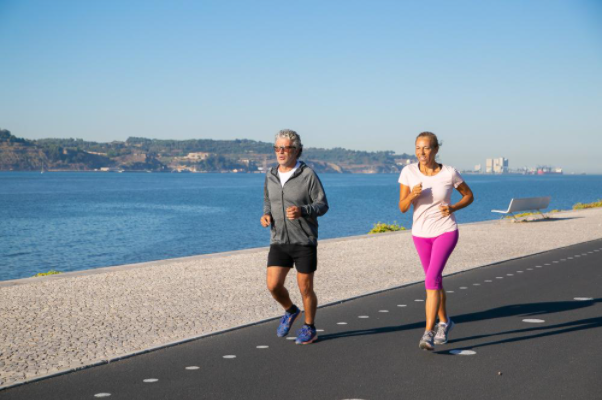Running and Aging: How to Keep Going Strong as You Get Older

Running is a timeless activity that brings countless benefits at every stage of life. As you age, however, maintaining your running routine and staying injury-free can become more challenging. In this article, we will explore the keys to running and aging gracefully, offering insights, tips, and strategies to help you keep going strong as the years pass.
The Benefits of Running for Seniors
Running is not just for the young; it offers a wide array of benefits for seniors as well. These include improved cardiovascular health, increased bone density, enhanced mental well-being, and the opportunity to maintain a healthy weight. Running also fosters social connections, as it often involves group runs and events, providing a sense of community.
Listening to Your Body
As you age, it becomes even more critical to listen to your body and respect its signals. Pay attention to any new aches, pains, or discomfort during or after your runs. While some muscle soreness is normal, persistent or severe pain should not be ignored. Be open to modifying your running routine based on your body’s needs.
Adjusting Your Training Plan
Adapting your training plan to suit your changing needs is essential for running and aging
successfully. Incorporate more flexibility and rest days into your routine to allow for recovery. Focus on cross-training activities like swimming, cycling, and yoga to maintain overall fitness and reduce the risk of overuse injuries. Consider investing in a running vest for phone and running lights to enhance safety and convenience during your runs.
Strength Training for Seniors
Strength training plays a crucial role in maintaining muscle mass and bone density as you age. Incorporate resistance exercises into your fitness regimen to strengthen key muscle groups that support your running. A stronger body can improve your running form and reduce the risk of falls and injuries.
Nutrition and Hydration
Proper nutrition and hydration are fundamental for running and aging gracefully. Pay attention to your diet, ensuring it includes a balance of macronutrients and micronutrients that support your energy levels and overall health. Staying well-hydrated is equally important, especially as your body’s hydration needs may change with age.
Setting Realistic Goals
While it’s essential to stay ambitious, setting realistic running goals becomes increasingly important as you age. Your pace and recovery times may naturally slow down, and that’s perfectly okay. Focus on goals that align with your current fitness level and health, and be proud of your achievements, no matter the distance or pace.
Start with a Strong Foundation
If you’re new to running or have been away from it for a while, it’s essential to start with a strong foundation. Begin with a visit to your healthcare provider to ensure you’re physically ready for running. Once you have the green light, consider working with a running coach or trainer who can help you develop a personalized training plan. This plan should take into account your fitness level, age, and any potential limitations.
Conclusion: Embracing the Journey of Running and Aging
Running is a lifelong journey that can continue to bring joy, health, and fulfillment as you age. By embracing the benefits of running, listening to your body, adjusting your training plan, incorporating strength training, and prioritizing nutrition and hydration, you can maintain your love for running well into your senior years.
Remember that running is a deeply personal experience, and there is no one-size-fits-all approach to running and aging. Embrace your unique journey, celebrate your achievements, and cherish the sense of freedom and vitality that running brings to your life. With the right mindset, support, and adjustments, you can keep going strong, nurturing your passion for running as you gracefully navigate the passage of time.
